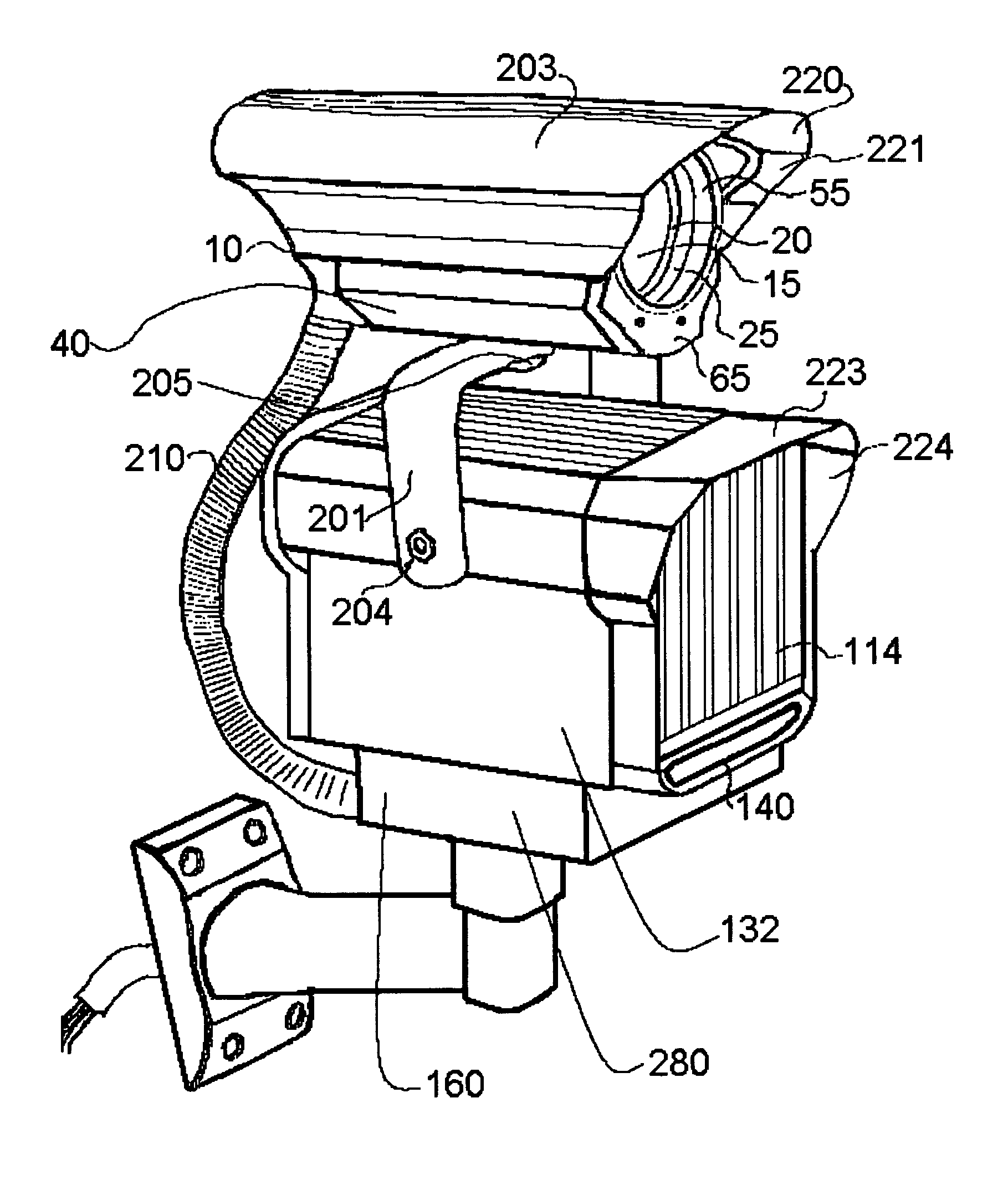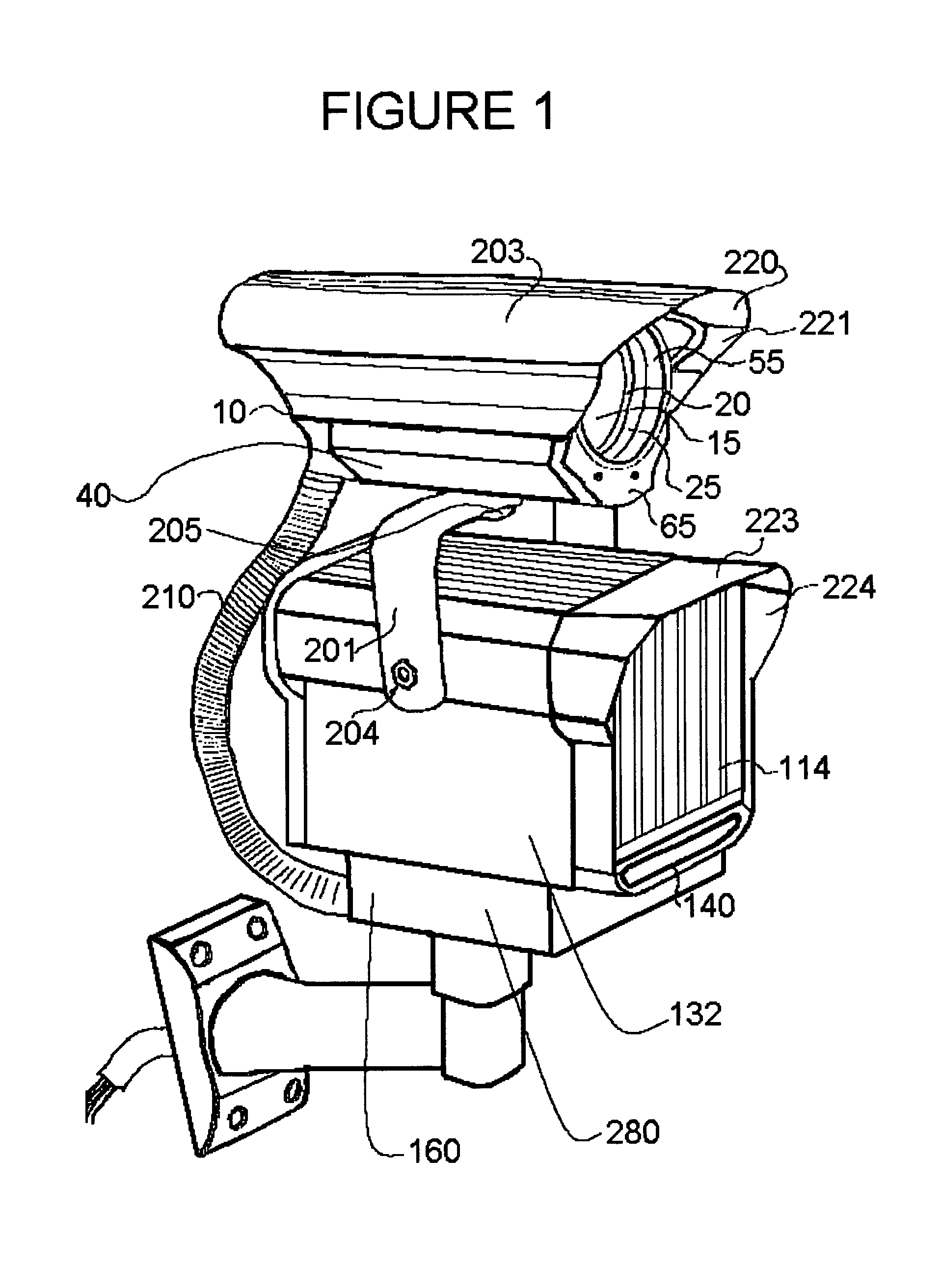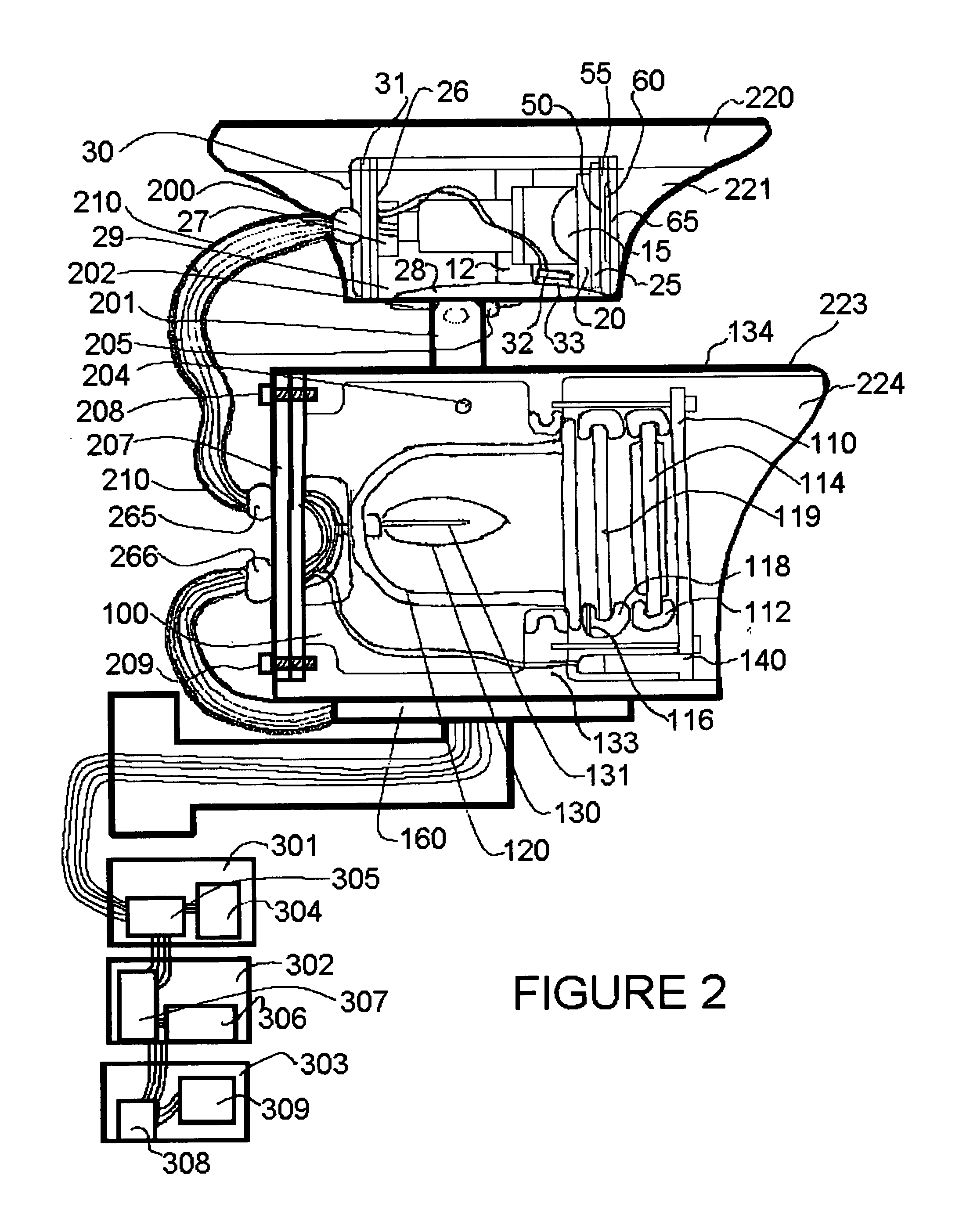Vehicle license plate imaging and reading system for day and night
- Summary
- Abstract
- Description
- Claims
- Application Information
AI Technical Summary
Benefits of technology
Problems solved by technology
Method used
Image
Examples
Embodiment Construction
[0026]Referring to FIGS. 1 and 2, the system comprises a mono CCD camera 10 enhanced for infrared sensitivity, reduced inter-pixel leakage and high resolution. The lens 15 has a focus adjuster 20 and an aperture iris adjuster 25. The lens 15 has a very small aperture formed by the aperture iris adjuster, preferably set to F8 to reduce the amount of light falling on the sensor from vehicle headlights and reflected sunlight. This avoids camera sensor overload, increases depth of field for focussed images of license plates on moving vehicles, and avoids vertical smearing of images. The lens 15 screws into the camera case 26 via the camera mount 12. The camera 10 and lens 15 attach to a sprung carriage 28, which facilitates the mounting into the main camera housing 40. The sprung edges of the carriage 28 fit into grooves as at 29 in the main camera housing 40. At the front of the main camera housing 40 the camera infrared filter 50 and plain glass window 60 are held in a double moulded ...
PUM
 Login to View More
Login to View More Abstract
Description
Claims
Application Information
 Login to View More
Login to View More - R&D
- Intellectual Property
- Life Sciences
- Materials
- Tech Scout
- Unparalleled Data Quality
- Higher Quality Content
- 60% Fewer Hallucinations
Browse by: Latest US Patents, China's latest patents, Technical Efficacy Thesaurus, Application Domain, Technology Topic, Popular Technical Reports.
© 2025 PatSnap. All rights reserved.Legal|Privacy policy|Modern Slavery Act Transparency Statement|Sitemap|About US| Contact US: help@patsnap.com



